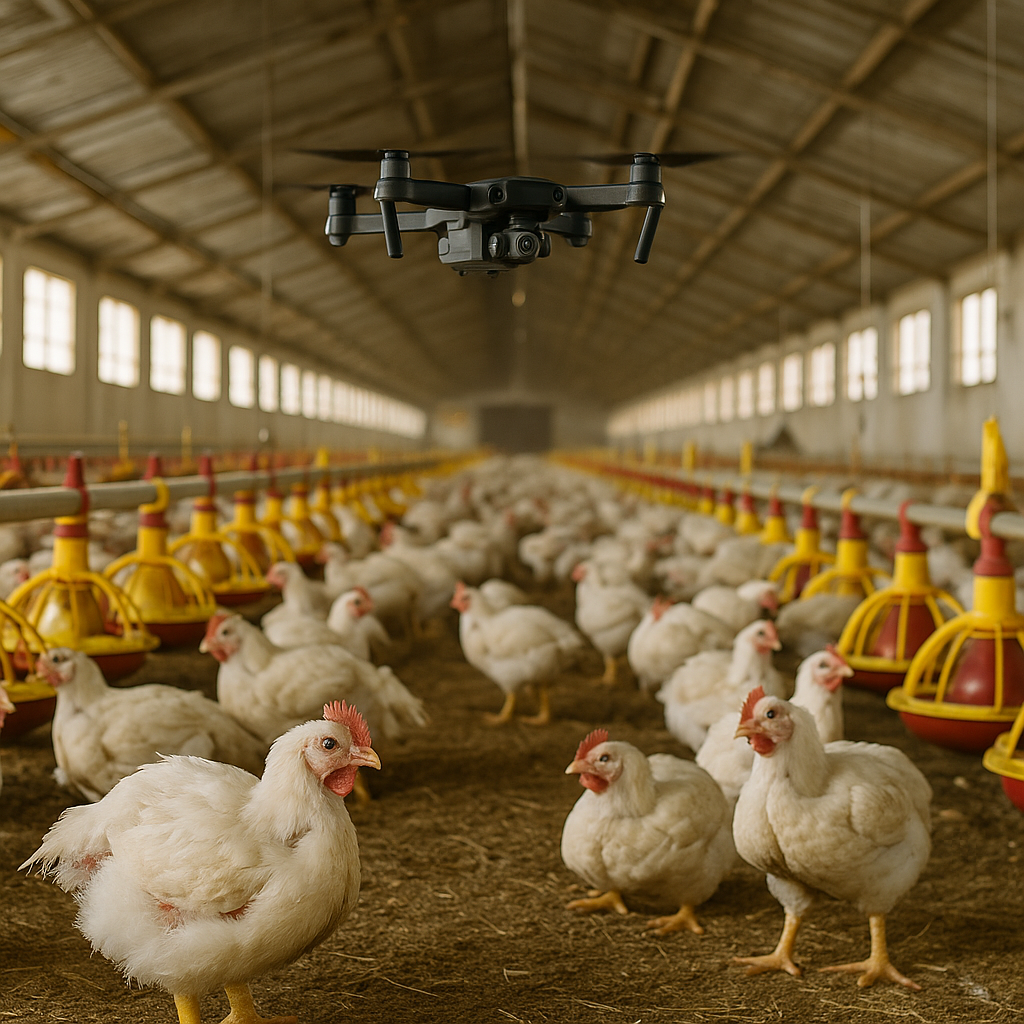Standards and adoption gaps slowing AI’s full potential in poultry sector
On the economic front, AI tools such as automated counting, precision feeding, and vision-based weight estimation are helping farms increase productivity while optimizing labor and feed use. These technologies contribute to consistent product quality and better margins, especially for large-scale producers.

Artificial intelligence is transforming chicken farming by improving welfare, productivity, and environmental sustainability, according to a new study that also reveals persistent barriers that hinder large-scale deployment, pointing out the need for robust standards, integrated control systems, and long-term field validation.
The study, titled “How AI Improves Sustainable Chicken Farming: A Literature Review of Welfare, Economic, and Environmental Dimensions” and published in Agriculture, analyzes AI’s contributions to the three pillars of sustainability in poultry farming, animal welfare, economic performance, and environmental outcomes, while highlighting gaps that must be addressed to move from pilot projects to commercial practice.
AI’s impact across welfare, economics, and environment
The review finds that AI has already made significant inroads in animal welfare by enabling early, less invasive monitoring of flock health and behavior. Automated vision-based detection helps identify stress, lameness, and disease symptoms faster than traditional manual checks, potentially extending productive lifespans and improving overall flock well-being.
On the economic front, AI tools such as automated counting, precision feeding, and vision-based weight estimation are helping farms increase productivity while optimizing labor and feed use. These technologies contribute to consistent product quality and better margins, especially for large-scale producers.
For environmental sustainability, AI supports odor and ammonia prediction, advanced ventilation monitoring, and data-driven control strategies that reduce energy use and emissions. However, the review notes that environmental applications remain underrepresented, with far fewer studies compared to welfare and production-related work.
Barriers to widespread adoption
Despite proven potential, the study states that AI in poultry farming faces several practical obstacles that limit its commercial impact.
One of the biggest challenges is the lack of open standards and benchmarks for models and data, which hampers system interoperability and slows innovation. The authors also highlight the burden of continuous sensor-based monitoring, which raises computational demands and reliability issues for farms.
Many existing solutions stop at detection or risk scoring without integrating automated control, leaving farmers to interpret data rather than act on it directly. This gap between perception and action prevents AI from fully optimizing conditions in poultry houses.
Economic hurdles persist as well, with high upfront costs and uncertain long-term returns discouraging investment, especially among smaller farms. Data ownership and privacy concerns also deter adoption in regions with limited regulatory guidance.
The review further points out a strong research bias toward vision-based technologies, with relatively little work devoted to integrating audio analytics, gas sensing, or microclimate telemetry, factors that could enhance the reliability and scope of AI-driven management.
Roadmap for future progress
To realize AI’s full potential in chicken farming, the authors call for a shift from isolated pilot projects to multi-season, commercial-scale deployments that measure long-term reliability, sensor calibration needs, and energy consumption. Such deployments can help build evidence for the economic value of AI-driven systems and guide refinements in real-world conditions.
They also recommend prioritizing the development of low-cost, robust solutions that can integrate with existing farm infrastructure and operate in challenging conditions without frequent maintenance.
A critical priority is the creation of perception–cognition–action pipelines that close the loop between sensing and automated control. These pipelines should be supported by online learning capabilities, enabling systems to adapt dynamically to changing flock conditions and environmental variables.
The review highlights the importance of expanding beyond visual sensors to include audio analytics, zero-drift gas probes, microclimate telemetry, and energy-harvesting wearables, which can provide a more complete picture of flock welfare and environmental quality.
Finally, the authors urge the development of open standards and collaborative data frameworks to enable benchmarking and interoperability, paving the way for more rapid, evidence-based progress in the sector.
- FIRST PUBLISHED IN:
- Devdiscourse










